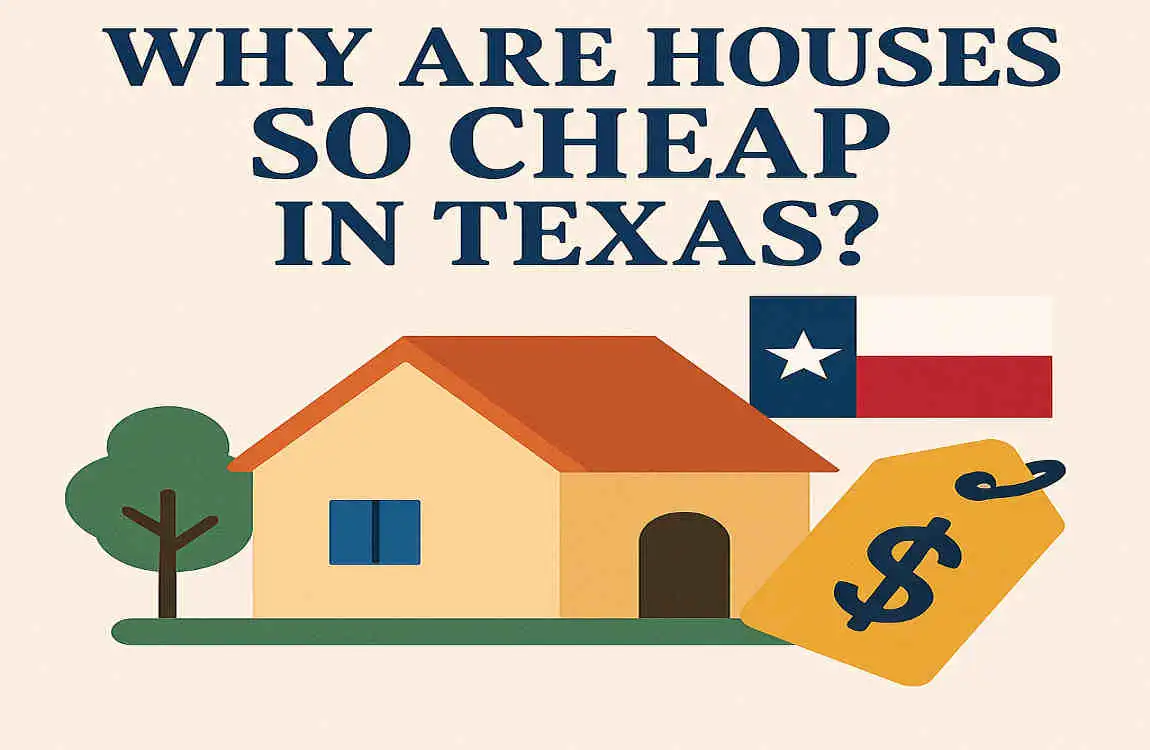This year, home prices in Texas and Georgia show notable differences that buyers should understand. Georgia’s average home price is around $335,963, slightly higher than Texas’ median of about $306,682, making Texas generally more affordable on home price alone. Both states experience a stable market with increased inventory, but Texas benefits from a robust job market and no state income tax. At the same time, Georgia offers diverse communities and down payment assistance programs that help with affordability. Buyers should also consider additional factors such as property taxes, insurance costs, and local economic conditions when comparing these markets.
Overview of Housing Markets in Texas and Georgia

Average Home Prices in Major Cities and Suburban Areas
In 2025, the average home price in Texas varies by location. In major cities like Houston and Dallas, you can expect to pay around $350,000 to $450,000 for a single-family home. However, if you venture out to the suburbs or more rural areas, prices can drop significantly, with some homes selling for as low as $200,000.
On the other hand, Georgia’s housing market presents a different picture. In Atlanta, the state’s largest city, the average home price hovers around $450,000 to $550,000. In other urban areas, such as Savannah and Augusta, prices are slightly lower but still higher than in Texas. Suburban and rural areas in Georgia are also more expensive than their Texas counterparts.
Recent Market Trends
The housing markets in both Texas and Georgia have experienced some interesting trends in 2025.
- Price Growth: Texas has seen a moderate increase in home prices over the past year, with average growth rates of 3-5%. In contrast, Georgia has experienced a slightly higher growth rate of 5-7%, particularly in the Atlanta metro area.
- Inventory Levels: Texas currently has a higher inventory of homes for sale compared to Georgia. This means buyers in Texas have more options, which can help keep prices in check.
- Buyer Demand: Both states have seen steady demand from homebuyers, but Georgia’s demand has been stronger, especially in the Atlanta area. This increased demand has contributed to the higher home prices in the state.
Why Are Houses So Cheap in Texas?

Availability of Affordable Land and Urban Sprawl
One of the main reasons for the lower home prices in Texas is the abundance of affordable land. Texas is a vast state with plenty of room to grow, and this has led to significant urban sprawl. As cities like Houston and Dallas expand outward, new housing developments are popping up on the outskirts, where land is cheaper. This abundance of affordable land helps keep home prices down.
Less Restrictive Zoning and Building Regulations
Another factor contributing to Texas’s affordable housing market is the state’s less restrictive zoning and building regulations. In Texas, it’s often easier and faster to get permits for new construction projects, which can help lower the overall cost of building a home. In contrast, Georgia has stricter regulations, particularly in urban areas, which can drive up construction costs and, in turn, home prices.
Inexpensive Labor and Construction Materials
The cost of labor and construction materials also plays a role in keeping Texas homes affordable. In general, labor costs are lower in Texas compared to Georgia, and the state’s proximity to Mexico can provide access to cheaper building materials. These savings can be passed on to homebuyers through lower prices.
Property Tax Structure
Texas’s property tax structure is another factor that can affect home affordability. While property tax rates in Texas are higher than in Georgia, the state does not have a personal income tax. This means that homeowners in Texas may pay more in property taxes, but they don’t have to worry about state income tax. In Georgia, the property tax rates are lower, but residents do have to pay state income tax. Buyers need to consider these factors when comparing the overall cost of homeownership in both states.
Contrast with High-Cost-of-Living Areas
When looking at Texas’s affordable housing landscape, it’s helpful to compare it with high-cost-of-living areas in other parts of the country. Cities like San Francisco, New York, and Seattle have much higher home prices due to a combination of factors like limited land availability, high demand, and strict regulations. Texas’s lower cost of living and more affordable housing options can be attractive to buyers looking to escape these expensive markets.
Higher Inventory and Slower Price Inflation
Finally, Texas’s higher inventory of homes for sale and slower price inflation can help keep prices in check. When more homes are available on the market, buyers have more options and can be more selective, which can put downward pressure on prices. In contrast, Georgia’s lower inventory and stronger demand have contributed to faster price growth in some areas.
Comparing Key Factors Influencing Home Prices in Texas vs. Georgia

To help you better understand the differences between the housing markets in Texas and Georgia, let’s take a closer look at some of the key factors influencing home prices in each state.
Factor Texas Georgia
Land availability: Large supply of flat, developable land. More limited supply near urban centers
Zoning/building laws: Less restrictive, faster permitting. Stricter regulations in urban areas
Construction costs are: lower due to fewer regulations & cheaper labor, and higher due to rules & labor costs.
Property taxes: Higher rates, but no state income tax. Lower rates, state income tax present
Housing demand is growing but balanced by supply—strong growth, especially near Atlanta.
Market inventory levels: High inventory, stabilizing prices. Moderate inventory, rising prices
As you can see from the table above, there are some significant differences between the housing markets in Texas and Georgia. Texas benefits from a larger supply of affordable land, less restrictive regulations, and lower construction costs, all of which contribute to more affordable home prices. On the other hand, Georgia’s more limited land supply, stricter regulations, and higher construction costs can drive up home prices, particularly in urban areas like Atlanta.
What Buyers Need to Know This Year

Now that we’ve explored the key factors influencing home prices in Texas and Georgia, let’s discuss what buyers need to know in 2025.
Weighing Affordability vs. Long-Term Costs
When comparing home prices in Texas and Georgia, it’s essential to consider not just the initial purchase price but also the long-term costs of homeownership. As we mentioned earlier, property taxes in Texas are higher than in Georgia, but Texas doesn’t have a state income tax. Home insurance rates can also vary between the two states, with Texas generally having higher rates due to the risk of natural disasters, such as hurricanes.
Buyers should carefully weigh these factors when deciding where to buy a home. While a house in Texas may have a lower purchase price, its long-term ownership costs could be higher. On the other hand, a more expensive home in Georgia might come with lower property taxes and insurance rates, potentially making it a better long-term investment.
Importance of Location
Location is always a crucial factor when buying a home, and this is especially true when comparing Texas and Georgia. In both states, home prices can vary significantly depending on whether you’re looking in an urban, suburban, or rural area.
In Texas, you’ll find the most affordable homes in rural and suburban areas, while prices tend to be higher in major cities like Houston and Dallas. In Georgia, the Atlanta metro area is the most expensive part of the state, with prices decreasing as you move further away from the city.
Buyers should consider their lifestyle and preferences when choosing a location. If you want to be close to the action in a big city, you may need to pay a Premium for a home in Texas or Georgia. However, if you’re looking for a more affordable and peaceful lifestyle, a suburban or rural area in either state could be a great option.
Benefits and Drawbacks of Buying in Texas
Buying a home in Texas has its advantages and disadvantages. Here are some key points to consider:
Benefits:
- Affordability: As we’ve discussed, Texas homes are generally more affordable than those in Georgia, making it an attractive option for budget-conscious buyers.
- Growth Potential: Texas’s strong economy and growing population could lead to home value appreciation over time.
- No State Income Tax: Texas’s lack of a state income tax can help offset the higher property tax rates.
Drawbacks:
- Market Volatility: Texas’s housing market can be more volatile than Georgia’s, with prices sometimes fluctuating more dramatically.
- Higher Property Taxes: While Texas doesn’t have a state income tax, the property tax rates are higher than in Georgia.
- Natural Disasters: Parts of Texas are prone to hurricanes and tornadoes, which can affect home insurance rates and the cost of homeownership.
Benefits and Drawbacks of Buying in Georgia
Similarly, buying a home in Georgia has its own set of pros and cons:
Benefits:
- Steady Growth: Georgia’s housing market has experienced steady growth in recent years, particularly in the Atlanta area.
- Rising Demand: Strong demand for homes in Georgia, especially near Atlanta, could drive home value appreciation.
- Community Infrastructure: Georgia has a well-developed infrastructure, with good schools, hospitals, and transportation systems in many areas.
Drawbacks:
- Higher Home Prices: Homes in Georgia, especially in urban areas, tend to be more expensive than those in Texas.
- State Income Tax: Georgia has a state income tax, which can add to the overall cost of living.
- Limited Land Supply: The limited land supply near urban centers in Georgia can drive up home prices and make it harder to find affordable housing.
Tips for Buyers
As you navigate the home-buying process in Texas or Georgia, keep these tips in mind:
- Explore Financing Options: Research different mortgage options to find the one that best fits your financial situation. Consider factors like interest rates, down payment requirements, and monthly payments.
- Time the Market: While it’s impossible to predict the housing market with complete accuracy, try to buy when prices are relatively low and interest rates are favorable. Keep an eye on market trends and work with a local real estate expert to make informed decisions.
- Leverage Local Market Knowledge: Working with a knowledgeable local real estate agent can be invaluable when buying a home in Texas or Georgia. They can provide insights into neighborhood trends, upcoming developments, and other factors that could impact your home’s value.
Why Are Houses So Cheap in Texas? FAQ
Why are houses in Texas cheaper than in other states?
Houses in Texas are cheaper due to a combination of factors:
- Abundant Land Availability: Texas has a vast amount of flat, developable land, which makes it easier to build new homes. This abundance of land keeps prices lower compared to states with limited space for development .
- Relaxed Zoning and Building Regulations: Texas has fewer restrictions on zoning and building codes, allowing developers to build homes faster and at a lower cost. In contrast, states like California have stricter regulations, which drive up construction costs .
- Lower Construction Costs: Labor and materials are generally cheaper in Texas. The state’s proximity to Mexico also provides access to affordable building materials, further reducing costs .
- High Housing Supply: Texas has a higher inventory of homes for sale compared to many other states. This balance between supply and demand helps stabilize prices .
- No State Income Tax: While Texas has higher property taxes, the absence of a state income tax makes it an attractive place to live, which indirectly supports affordability .
How does land availability affect home prices in Texas?
Texas is one of the largest states in the U.S., with vast amounts of undeveloped land. This abundance of land allows for urban sprawl, where cities like Houston, Dallas, and Austin can expand outward without running into geographical constraints. Developers can purchase large plots of land at relatively low costs, which translates into cheaper housing for buyers.
In contrast, states like California or New York have limited land availability near urban centers, leading to higher land prices and, consequently, more expensive homes.
What role do zoning laws play in Texas’s affordable housing market?
Texas’s relaxed zoning laws are a significant factor in its affordable housing market. Unlike states with strict zoning regulations that limit where and how homes can be built, Texas allows developers more freedom. This flexibility speeds up the construction process and reduces costs, making homes more affordable for buyers.
For example, in states like California, zoning laws often restrict the construction of multi-family housing or require lengthy approval processes, which drives up prices. Texas’s streamlined approach avoids these bottlenecks.
Are property taxes in Texas higher than in other states?
Yes, Texas has higher property tax rates compared to the national average. However, the state offsets this by not having a state income tax. This means that while homeowners in Texas may pay more in property taxes, they save money by not having to pay state income taxes.
For many residents, the overall cost of living in Texas remains lower than in states with both high property taxes and state income taxes, such as New York or California.
How does the cost of construction in Texas compare to other states?
Construction costs in Texas are generally lower due to:
- Cheaper Labor: Texas has a large workforce, and wages for construction jobs are often lower than in states with higher costs of living.
- Affordable Materials: The state’s proximity to Mexico provides access to inexpensive building materials, which helps reduce overall construction costs.
- Streamlined Processes: Developers in Texas benefit from faster permitting and fewer regulatory hurdles, which reduces delays and keeps costs down.
These factors make it more affordable to build homes in Texas, and the savings are passed on to buyers.
Does Texas have a high housing supply?
Yes, Texas has a high housing supply compared to many other states. The combination of abundant land, relaxed regulations, and efficient construction processes allows developers to build homes quickly and in large numbers. This high supply helps balance demand and keeps prices stable.
For example, when demand for housing increases in Texas, developers can respond by building more homes, preventing prices from skyrocketing. In contrast, states with limited land or stricter regulations may struggle to meet demand, leading to higher prices.




